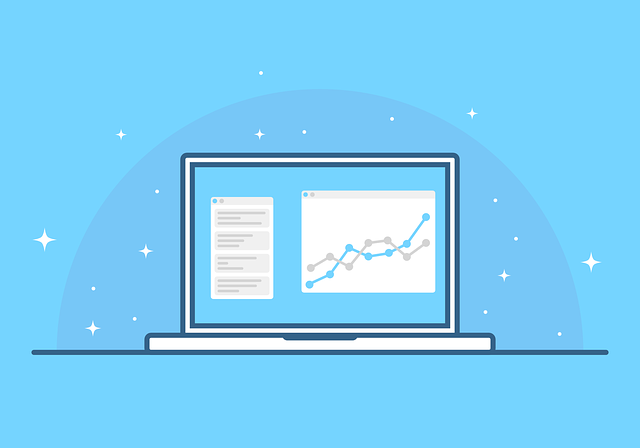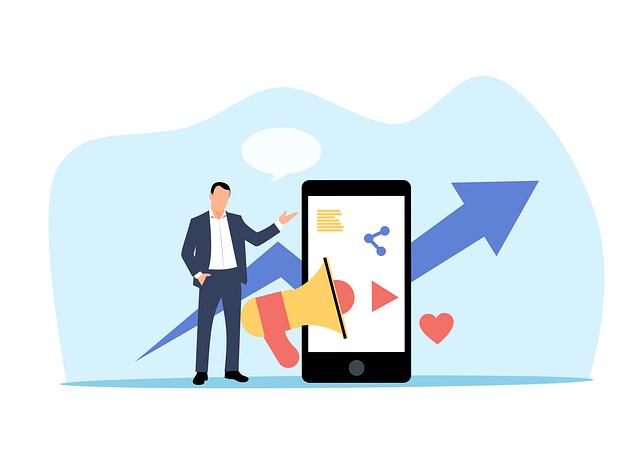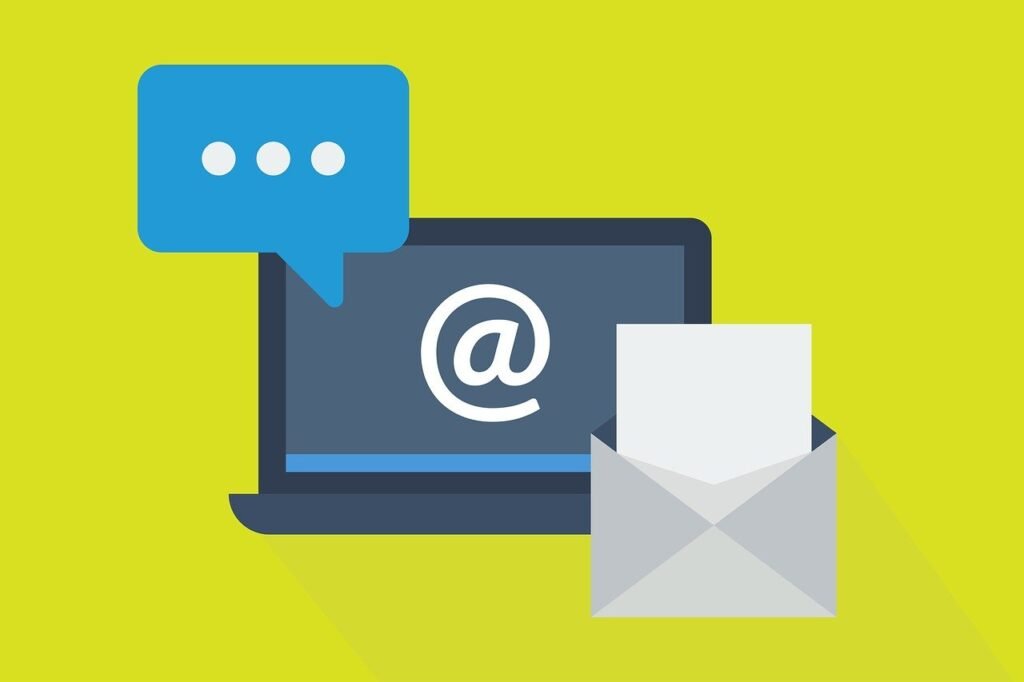Emails have been the cornerstone of digital marketing for decades. Despite the rise of social media, chatbots, and other flashy tools, email remains one of the most cost-effective and reliable ways to connect with prospects. But here’s the twist—managing email campaigns manually is a thing of the past. Enter AI-driven email campaigns.
Artificial intelligence doesn’t just automate the sending process; it tailors every email, analyzes data, and ensures that your leads are nurtured into customers without you lifting a finger. When done right, AI-driven email campaigns can work around the clock, converting leads while you focus on other aspects of your business.
Let’s dive into how you can use AI to set up email campaigns that work tirelessly to convert your leads on autopilot.
Step 1: Start with Data-Driven Personalization
The success of any email campaign starts with understanding your audience, and AI excels at this. By analyzing data from multiple sources—like website behavior, past email interactions, and demographic details—AI creates a detailed profile of your leads. This allows you to move beyond generic content and deliver hyper-personalized emails that resonate.
Understanding Your Audience with AI
For instance, instead of sending the same welcome email to all new subscribers, AI can segment your audience based on their interests or browsing habits. A prospect who explored your pricing page might receive an email highlighting your key benefits, while someone who downloaded a free guide might get follow-up tips related to that content.
AI helps you tailor emails to each recipient’s preferences, making every message feel like it was written just for them.
Dynamic Content for Deeper Engagement
AI-driven email campaigns go beyond static templates. They enable dynamic content—emails that change based on the recipient’s behavior, location, or other real-time factors. For example, if someone abandons their shopping cart, an AI-powered system can automatically send a reminder email with the specific products they left behind.
This dynamic approach isn’t limited to e-commerce. In B2B, you could send different case studies to leads based on their industry or job title. This kind of personalization keeps recipients engaged because they feel the email speaks directly to their needs.
Dynamic content ensures your emails remain relevant, increasing open rates and conversions.
Predictive Personalization at Scale
AI doesn’t just react to past behavior—it predicts future actions. Using machine learning, it can forecast what type of content a lead is most likely to engage with next. For example, if a prospect regularly interacts with educational content, AI might predict they’re in the research phase and recommend sending more in-depth guides or webinars.
This predictive ability allows you to stay one step ahead, providing leads with exactly what they need before they even ask. It’s like having a crystal ball for your email marketing strategy.
Predictive personalization scales effortlessly, ensuring your campaigns deliver value to every lead without overwhelming your team.
Step 2: Automate Lead Nurturing with AI Workflows

AI-powered workflows take the guesswork out of lead nurturing. Instead of manually planning and scheduling emails, AI creates intelligent sequences that adapt to each lead’s journey. For example, if a lead clicks on an email link but doesn’t take further action, the system can automatically send a follow-up with additional information or a new offer.
Setting Up Smart Email Sequences
These workflows ensure no lead falls through the cracks. AI tracks where each prospect is in the funnel and delivers the right email at the right time, whether it’s a reminder, an upsell, or a final nudge to close the deal.
With smart workflows, you can focus on strategy while AI handles the day-to-day interactions.
Triggered Emails for Timely Engagement
Triggered emails are one of the most powerful tools in AI-driven campaigns. These emails are automatically sent based on specific actions or milestones, such as signing up for a newsletter, visiting a product page, or attending a webinar. For example, if a lead downloads a free trial, AI can immediately send an email with setup tips and a CTA to book a demo.
The beauty of triggered emails is their timeliness. They arrive when a lead is already engaged, increasing the likelihood of conversion. AI ensures these triggers are precise, minimizing delays and maximizing impact.
Timely engagement keeps your brand top-of-mind and builds momentum toward conversion.
Adaptive Campaigns for Real-Time Adjustments
Traditional email campaigns follow a fixed schedule, but AI-driven campaigns are adaptive. If a lead’s behavior changes mid-campaign—such as engaging heavily with pricing content—AI can adjust the sequence to prioritize closing the sale.
For instance, instead of waiting to send a discount offer at the end of a generic campaign, the system might recognize the lead’s urgency and deliver the offer immediately. This agility ensures your campaigns remain relevant and responsive, even as circumstances evolve.
Adaptive workflows allow your campaigns to pivot effortlessly, ensuring no opportunity is missed.
Step 3: Optimize Subject Lines and Content with AI

The subject line is the gateway to your email. If it doesn’t catch attention, the rest of your content might never be seen. AI tools like Phrasee or Persado analyze millions of data points to craft subject lines that maximize open rates.
Crafting Irresistible Subject Lines
For example, AI might test different variations of a subject line—like “Unlock Your Free Trial Today” vs. “Don’t Miss Out on Your Free Trial”—to determine which performs better for your audience. This kind of real-time optimization ensures your emails consistently grab attention.
AI-crafted subject lines combine creativity and data to boost your campaign’s performance.
A/B Testing Made Smarter
A/B testing has been a staple of email marketing for years, but AI takes it to the next level. Instead of running one test at a time, AI can test multiple variables—like tone, length, or call-to-action wording—simultaneously. It then analyzes results to identify the best-performing combinations.
For instance, AI might discover that a casual tone works better for first-time users, while a professional tone resonates with returning customers. This insight allows you to fine-tune your emails for each segment.
Smarter A/B testing ensures every element of your campaign is optimized for success.
Content Suggestions Based on Engagement
AI doesn’t just optimize your content—it helps you create it. By analyzing past campaigns, AI tools can suggest topics, formats, or phrases that are likely to resonate with your audience. For example, if your leads often engage with how-to guides, AI might recommend creating a series of emails centered around actionable tips.
These suggestions save time and ensure your content aligns with what your audience wants to see. Over time, AI learns what works best, making your campaigns increasingly effective.
Content suggestions keep your emails fresh, relevant, and highly engaging.
Step 4: Analyze and Improve Campaign Performance

One of the biggest advantages of AI-driven email campaigns is real-time analytics. Traditional campaigns require manual analysis after the fact, but AI continuously monitors performance, providing instant feedback on open rates, click-through rates, and conversions.
Real-Time Analytics for Instant Feedback
For example, if a specific email underperforms, AI can identify the issue—such as a poorly written subject line or a weak call-to-action—and recommend improvements. These insights allow you to tweak your campaigns on the fly, ensuring consistent results.
Real-time analytics keep your campaigns agile and performance-focused.
Predictive Analytics for Future Campaigns
AI doesn’t just analyze past performance—it uses predictive analytics to forecast future outcomes. For instance, it might predict that certain leads are more likely to convert if they receive a follow-up email within 24 hours. These insights help you plan smarter campaigns that maximize ROI.
Predictive analytics also identifies trends, such as the best times to send emails or the types of offers that resonate most. Armed with this data, you can create campaigns that consistently outperform expectations.
Future-focused insights keep your email strategy one step ahead.
Benchmarking for Long-Term Success
AI-powered platforms often include benchmarking tools that compare your campaign performance against industry standards. For example, if your open rates are below average, AI might suggest best practices to improve them, such as segmenting your audience more effectively or refining your subject lines.
This benchmarking ensures you’re not just meeting your own goals but staying competitive within your industry. Over time, it helps you establish a standard of excellence for your email marketing efforts.
Benchmarking provides a clear roadmap for continuous improvement.

Related: Check out our free tools:

Step 5: Scale and Automate for Growth
As your business grows, so does your email list. Managing larger campaigns manually can quickly become overwhelming, but AI handles scaling effortlessly. Whether you’re sending emails to 1,000 leads or 100,000, AI ensures every message is personalized and timely.
Scaling Campaigns Without Additional Effort
For example, AI can segment a massive audience into smaller, more targeted groups, delivering tailored content to each segment without requiring additional resources. This scalability allows you to maintain quality while expanding your reach.
Scaling with AI keeps your campaigns efficient, no matter how large your audience becomes.
Automating Cross-Channel Integration
Email doesn’t exist in a vacuum—it’s part of a larger marketing ecosystem. AI-driven platforms can integrate your email campaigns with other channels, such as social media or SMS, creating a seamless customer journey.
For instance, if a lead clicks a link in your email but doesn’t convert, AI can trigger a retargeting ad on Facebook or send a follow-up SMS. This kind of cross-channel automation ensures your message stays consistent and effective across touchpoints.
Integrated campaigns amplify your reach, driving higher engagement and conversions.
Expanding into Advanced AI Features
Once your email campaigns are running smoothly, explore advanced AI features like natural language generation (NLG) or sentiment analysis. These tools can craft even more compelling messages or gauge the emotional impact of your emails, refining your strategy further.
For example, sentiment analysis might reveal that a particular email resonates more positively with leads, prompting you to replicate its tone in future campaigns. These advanced capabilities keep your campaigns innovative and effective.
Embracing advanced AI features ensures your email strategy stays ahead of the curve.
Step 6: Building Trust and Long-Term Relationships with AI Emails

While AI is driving your email campaigns, it’s important not to lose the human touch. Recipients can tell when an email feels too robotic, so the key is to strike a balance. AI allows you to automate processes, but you can still infuse a conversational and empathetic tone that resonates with your audience.
Humanizing Automated Emails
For instance, instead of a standard “Thank you for signing up,” an AI-driven email can analyze past behavior and say, “Hi Alex, thanks for joining us! We noticed you were interested in our marketing automation tools—here’s a quick guide to help you get started.” This approach combines automation with personalization, making the interaction feel genuine.
Humanized emails show your audience that you understand and value them, even when the process is automated.
Using AI to Predict Long-Term Engagement
AI doesn’t just focus on short-term conversions; it can also analyze data to predict long-term customer engagement. By identifying patterns, AI can segment leads who are likely to become repeat customers or long-term subscribers and tailor campaigns specifically for them.
For example, if a customer frequently interacts with your educational content, the AI system can schedule a series of value-packed emails aimed at deepening their knowledge and loyalty. Over time, this builds trust and positions your brand as a reliable resource.
Predictive engagement strategies foster lasting relationships, turning leads into lifelong advocates.
Retention Through Tailored Follow-Ups
Retention is just as important as acquisition. AI can identify when a customer might be losing interest—such as a decline in email opens or clicks—and proactively re-engage them. For example, the system might send a personalized email saying, “We miss you! Here’s a 10% discount to welcome you back.”
This kind of timely, tailored follow-up ensures that your brand remains relevant in the customer’s inbox, even during periods of inactivity. It’s far easier and more cost-effective to retain an existing customer than to acquire a new one, and AI helps make this possible.
Retention-focused AI emails keep your audience engaged and loyal, ensuring sustained growth.
Step 7: Ensuring Compliance and Ethical Use of AI in Email Marketing

As you implement AI-driven email campaigns, it’s crucial to ensure compliance with data protection regulations like GDPR and CCPA. AI relies heavily on data, so transparency and consent are non-negotiable. Clearly communicate how you collect, store, and use customer data, and always provide an option to opt out.
Staying GDPR and CCPA Compliant
For instance, your subscription form should explicitly state how you’ll use the subscriber’s email address, and your emails should include an easy-to-find unsubscribe link. AI tools can help manage compliance by automatically updating lists and removing contacts who opt out.
Compliance builds trust and safeguards your brand from legal issues.
Using AI Ethically
AI’s ability to analyze data is a double-edged sword. While it enhances personalization, overusing it can feel invasive. For example, if a customer receives an email referencing a purchase they made months ago, they might feel uneasy if it’s not framed appropriately.
The key is to use AI ethically—focus on delivering value rather than exploiting data. For example, instead of saying, “We saw you bought Product X,” try, “Many of our customers who enjoyed Product X found these tips helpful.” This approach uses insights without crossing the line.
Ethical AI use ensures your audience feels respected and valued, strengthening your brand’s reputation.
Regular Audits for Accuracy
AI systems are only as good as the data they’re fed. Regular audits of your email campaigns ensure that your AI tools are working as intended and not making inaccurate assumptions or delivering irrelevant content.
For instance, review whether high-scoring leads are converting as expected or if certain segments are underperforming. These audits help you fine-tune your AI algorithms and maintain the quality of your campaigns.
Routine checks keep your email strategy aligned with your business goals and audience needs.
Step 8: Looking Ahead—The Future of AI-Driven Email Campaigns

The future of email marketing lies in hyper-personalization. AI will evolve to create even more granular segments and deliver highly specific content. For example, instead of segmenting based on industry, AI might create micro-segments like “first-time buyers in tech” or “repeat customers in retail,” tailoring content even further.
AI-Powered Hyper-Personalization
This level of personalization will make emails feel less like marketing and more like one-on-one conversations. The result? Higher engagement, better conversion rates, and stronger customer loyalty.
Hyper-personalized campaigns are the next frontier for AI-driven email marketing.
Voice and Visual Integration
AI is already paving the way for interactive email experiences. Imagine receiving an email where you can watch a video demonstration or use voice commands to navigate content. These immersive elements, powered by AI, will make emails more engaging and memorable.
For instance, a lead could say, “Show me the pricing,” and the email dynamically updates to display pricing details. These innovations will blur the lines between traditional emails and interactive experiences.
Voice and visual AI integrations will redefine how businesses connect with their audience.
AI as a Creative Partner
As AI tools become more advanced, they’ll not only analyze data but also contribute creatively. AI systems like OpenAI’s models can already generate engaging copy, and future iterations will collaborate with marketers to craft entire campaigns.
For example, you could input a few key ideas, and the AI would generate subject lines, body content, and even visual suggestions, all tailored to your audience. This partnership will save time and unlock new creative possibilities.
AI’s role as a creative collaborator will make email marketing more dynamic and efficient than ever.
Conclusion: AI as Your Silent Salesperson
AI-driven email campaigns aren’t just about automation—they’re about smarter, more personalized interactions that drive results. From understanding your audience to optimizing every touchpoint, AI works tirelessly to convert leads while freeing up your team to focus on strategy.
The key to success lies in continuous improvement. Use AI’s insights to refine your approach, scale your efforts, and stay responsive to your audience’s needs. With AI in your corner, your email campaigns won’t just run on autopilot—they’ll thrive.
Start building your AI-driven email strategy today, and watch as your leads transform into loyal customers, all while you focus on scaling your business. In the world of marketing, AI isn’t just the future—it’s your competitive edge.
READ NEXT:
- Are Vanity Metrics Killing Your Marketing Efficiency? Here’s What to Track Instead
- Pinpointing Digital Marketing ROI: Why Your Metrics Aren’t Telling the Full Story
- Unlocking Real ROI in Digital Marketing: The Hidden Costs Draining Your Budget
- How Misaligned Marketing Funnels Are Blocking Your ROI Potential
- Best Digital Marketing Agency In Santa Ana, California
- Best Digital Marketing Agency In San Francisco, California





















